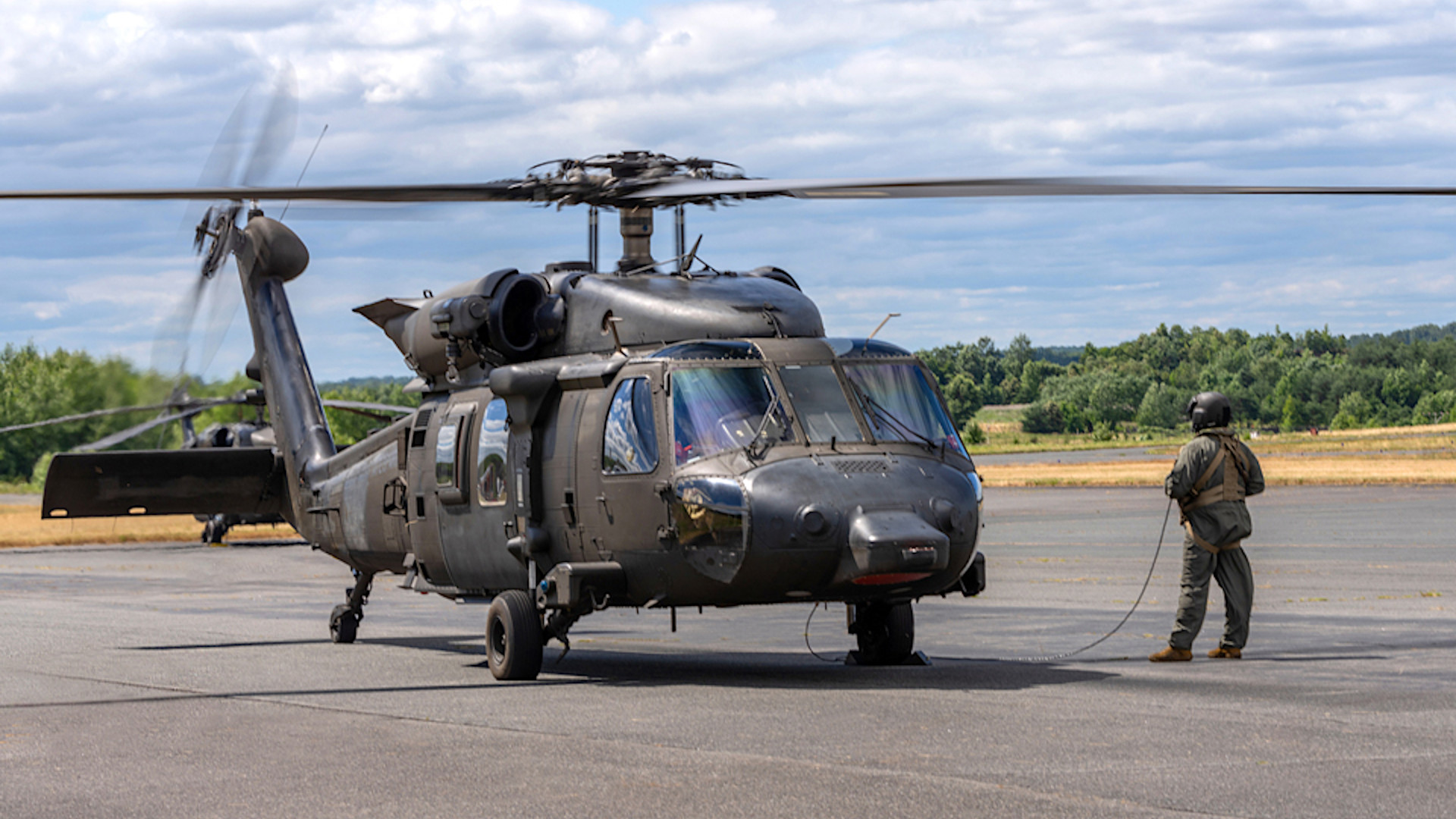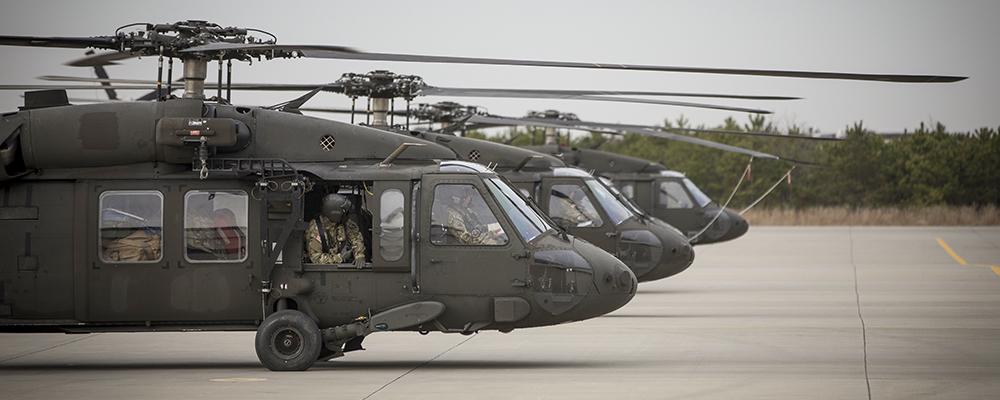The Role of the UH 60 in Combat Zones: Enhancing Mobility and Operational Efficiency
The Role of the UH 60 in Combat Zones: Enhancing Mobility and Operational Efficiency
Blog Article
Discovering the Background and Advancement of the UH 60 Helicopter

Beginnings of the UH-60
The origins of the UH-60 helicopter can be traced back to the late 1960s, a period noted by the demand for a versatile utility airplane that might adjust to the developing needs of modern-day warfare. The united state Military acknowledged the need for a replacement for the older UH-1 Iroquois, which was becoming significantly poor for the intricacies of contemporary combat scenarios. In 1967, the Army launched the Utility Tactical Transportation Airplane System (UTTAS) program, which sought to establish a multi-role helicopter qualified of numerous objectives, consisting of troop transportation, medical emptying, and logistical support.
The UH-60 Black Hawk was introduced, showcasing innovative design components and advanced modern technology that set it apart from its predecessors. The UH-60 swiftly gained acknowledgment for its durable efficiency, dependability, and flexibility, paving the way for its comprehensive use in army operations and strengthening its condition as a keystone of U.S. Army air travel.
Secret Design Features
Innovative style functions of the UH-60 Black Hawk dramatically add to its operational efficiency. Among one of the most significant facets is its twin-engine setup, which enhances integrity and provides a higher power-to-weight ratio, making it possible for the helicopter to carry out under numerous problems. The aircraft's four-blade primary blades system supplies enhanced lift and ability to move, necessary for tactical goals.

In addition, the cabin is made for optimal exposure and ergonomics, including advanced avionics that simplify pilot operations. The modular style of the UH-60 allows for very easy maintenance and flexibility, making it suitable for various mission profiles, from army transportation to medevac operations. These key design functions make certain that the UH-60 Black Hawk stays a flexible and reputable asset in army air travel, qualified of meeting the demands of modern warfare.
Technical Innovations
Current technological developments in the UH-60 Black Hawk have substantially enhanced its operational capabilities and convenience. The combination of advanced avionics, such as digital trip control systems and boosted situational understanding screens, allows pilots to operate with increased accuracy and efficiency. These systems facilitate enhanced navigation, interaction, and information sharing, allowing the helicopter to work properly in varied settings.
In addition, the introduction of composite materials has lowered the general weight of the airplane while maintaining structural honesty. This decrease boosts gas performance and extends functional variety. The consolidation of innovative rotor modern technology, including the usage of four-blade, completely expressed blades systems, has enhanced lift efficiency and maneuverability, permitting better handling in numerous trip problems.

In addition, innovations in propulsion systems, such as the T700-GE-701D engines, have actually boosted power output and integrity - uh 60. These engines add to superior performance in high-altitude and hot-weather problems
Finally, the assimilation of self-defense systems and enhanced important link sensor bundles enhances the Black Hawk's survivability and mission efficiency. Collectively, these technological improvements ensure that the UH-60 Black Hawk continues to be a crucial property in modern-day air travel, efficient in adjusting to the developing needs of military and altruistic goals.
Duty in Military Procedures
As the foundation of U.S. Military aeronautics, the UH-60 helicopter plays an essential duty in various army procedures, serving as a flexible system for battle assistance, transport, and medevac goals - uh 60. Its design integrates the capacity to operate in diverse atmospheres, making it This Site essential for army activity and logistical support in both traditional and non-traditional warfare

In medical discharge scenarios, the UH-60 has verified indispensable, considerably reducing the moment to transfer wounded soldiers from the battleground to clinical facilities. Its advanced avionics and evening vision abilities even more make certain goal success under challenging conditions. On the whole, the UH-60 helicopter remains an important asset, continuously adapting to fulfill the evolving demands of military operations and boosting the performance of U.S. pressures worldwide.
Future of the UH-60
Looking in advance, the future of the UH-60 helicopter entails substantial innovations in innovation and abilities created to enhance its functional performance. As army operations develop, the UH-60 is expected to incorporate cutting-edge modern technologies, consisting of enhanced avionics, boosted tools systems, and advanced communication tools. These improvements will certainly enable higher situational recognition and mission adaptability, guaranteeing that the UH-60 stays an important property on the battlefield.
One remarkable growth is the integration of fly-by-wire systems, which will improve flight control precision and lower pilot work. Efforts to upgrade the airframe and engines intend to boost payload, variety, and rate capacity, thus expanding the helicopter's operational range.
The future also holds guarantee for enhanced interoperability with unmanned aerial systems (UAS), allowing collaborated missions that take advantage of both manned and unmanned capabilities. In addition, the incorporation of fabricated knowledge and machine understanding can enhance flight characteristics and maintenance procedures, causing decreased operational costs.
Conclusion
The UH-60 Black view website Hawk helicopter represents a significant success in army air travel, developing from the U.S. Army's initial demands for a flexible utility airplane. Its innovative layout functions and continuous technological improvements have actually guaranteed its importance in numerous armed forces procedures over the years. As the needs of contemporary war change, the future of the UH-60 will likely involve further enhancements and adaptations, reinforcing its standing as a crucial property for armed forces worldwide.
The UH-60 Black Hawk helicopter stands for a substantial milestone in armed forces air travel, emerging from the U.S. Military's pursuit for a much more functional and dependable utility airplane in the late 20th century.The origins of the UH-60 helicopter can be mapped back to the late 1960s, a duration noted by the need for a versatile energy airplane that could adjust to the developing demands of contemporary war. In general, the UH-60 helicopter remains a vital property, continually adapting to satisfy the developing needs of armed forces operations and boosting the performance of U.S. pressures worldwide.
Looking ahead, the future of the UH-60 helicopter includes significant improvements in innovation and capacities developed to improve its operational efficiency.The UH-60 Black Hawk helicopter stands for a considerable achievement in army aeronautics, evolving from the U.S. Military's initial needs for a flexible utility aircraft.
Report this page